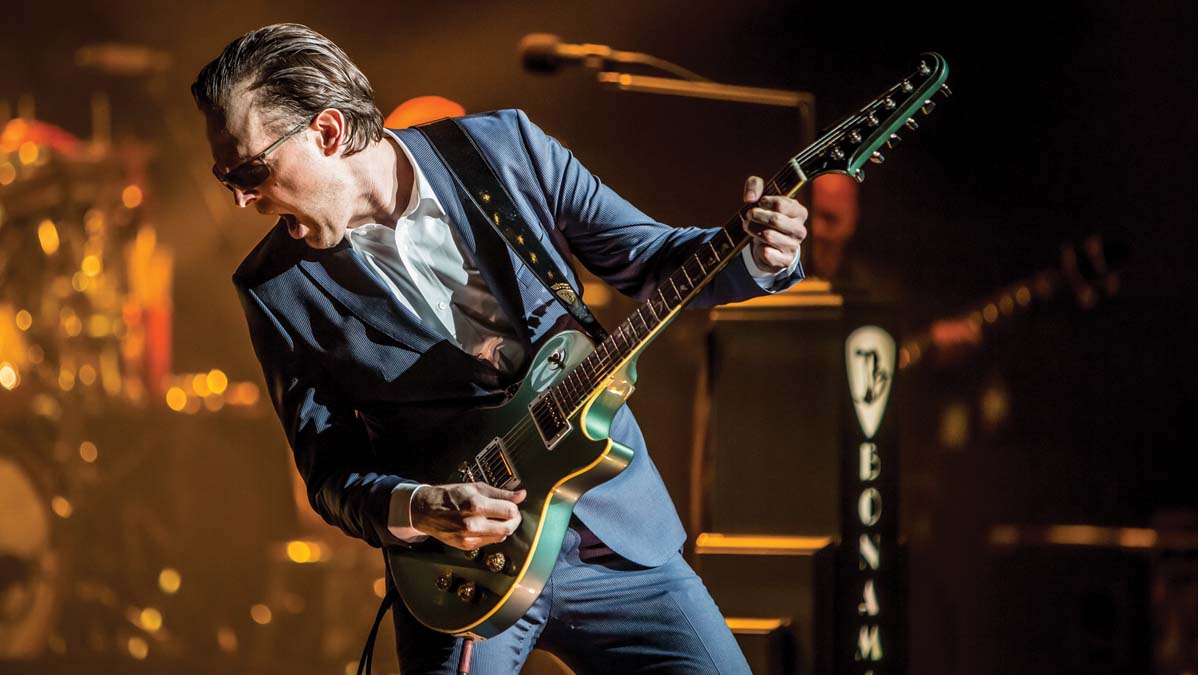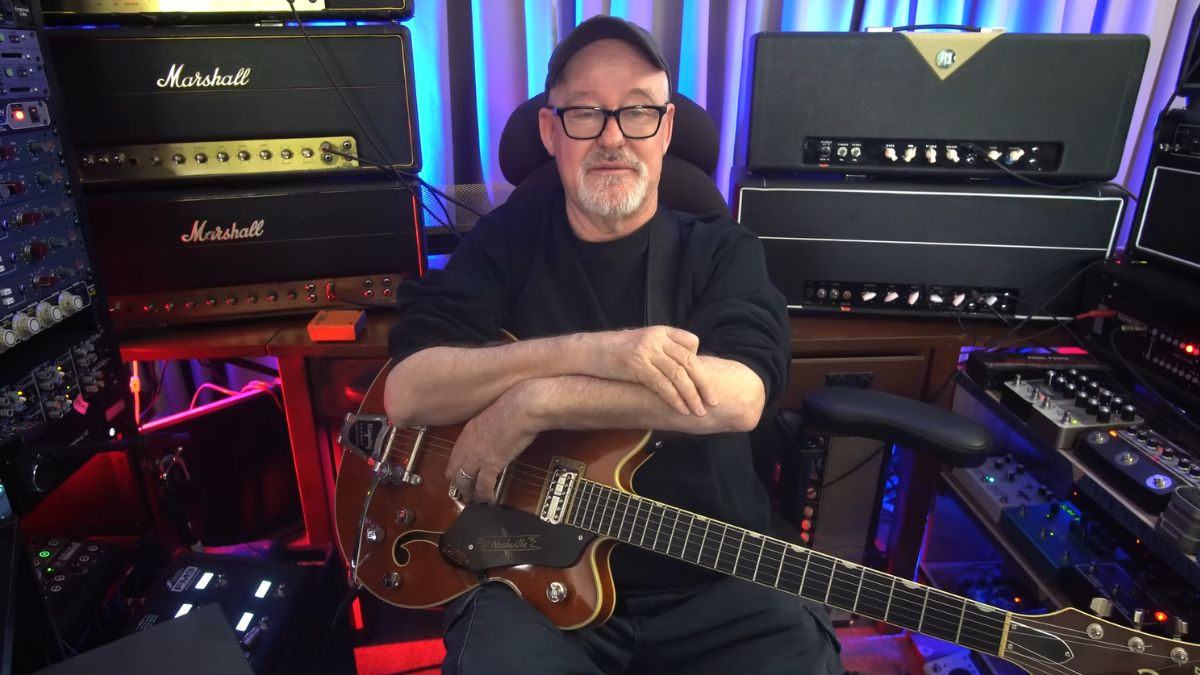Joe Bonamassa: “It’s not like I have these big songs that I need to change for radio. If I want prog time in Nerdville, let’s go!“
Nerdville's very own blues-rock maestro on the guitars behind Royal Tea, and his appreciation of Jethro Tull, Genesis and Yes

There have been all kinds of influences that have moulded Joe Bonamassa into the player he is over the years – blues heroes such as Albert King and Stevie Ray Vaughan, and rock legends Jeff Beck and Jimmy Page.
But ask the 43 year-old New Yorker about the sounds explored on his new album Royal Tea and he’ll enjoy going off-script for a while.
“I deal with blues rock until there’s no demand for it!” he says, laughing. But for a player who is so often regarded as one of the greatest blues enthusiasts on the planet, it’s refreshing for him to shed light on influences far, far beyond.
“One thing that’s so freeing about not being in the hit singles business is you have no rules!” he grins, talking to TG via video chat from his ‘Nerdville East’ base in Nashville, Tennessee. “It’s not like I have these big songs that I need to change or mix for radio. If I want prog time in Nerdville, let’s go!”
My taste is very eclectic, I love Jethro Tull to the point of putting them and Howlin’ Wolf in the same sentence when it comes to my passion for the music
Referring to the prog rock-esque staccato chords on Why Does It Take So Long To Say Goodbye – one of the standout tracks on the new album – Joe explains: “I like Mike Rutherford’s playing on the old Genesis stuff. Steve Hackett as well – I actually think that part in Why Does It Take So Long To Say Goodbye is a very Steve Hackett kind of one.
“There’s a ping-pong delay on there, Bernie Marsden and I came up with the chord changes. My taste is very eclectic – I love Jethro Tull to the point of putting them and Howlin’ Wolf in the same sentence when it comes to my passion for the music. The same goes for BB King and Yes.”
The evidence has always been there – Bonamassa’s debut album, A New Day Yesterday, released in 2000, was named after the Jethro Tull cover it included, and the live version of said title track would often segue into a movement from Yes’s Starship Trooper, as famously documented on his 2008 Live From Nowhere In Particular concert film.
All the latest guitar news, interviews, lessons, reviews, deals and more, direct to your inbox!
“There are definitely stylistic similarities,” shrugs Bonamassa. “Some of the jam bands would go down that proggy route. That said, I like the arranged side of it rather than the ‘I don’t know what we’re doing here but we’ve been going for 35 minutes’ kinda stuff!”
The new album was pieced together at Abbey Road Studios, which the guitarist had visited on three occasions prior – twice with Marsden, and once with Deep Purple keyboard player Jon Lord – though never with his own band for a solo release.
And the video for early single When One Door Opens takes fans right into the heart of the sessions, with Joe coaxing some pretty hairy bends out of a vintage Tele he’s had his eye on from a young age.
“It’s a Parsons/White B-Bender that I first saw when I was 13 years old,” he says, explaining that he was originally buying a Strat from a collector in New York and couldn’t help but notice the natural finish Thinline that was also in the room.
Some three decades later, after slowly acquiring various bits and pieces from the same collection, he had to find out if the Telecaster was available...
“By that point I’d bought a lot, so I asked if we could make a deal. He said the Tele had a humbucker rout, which I love, and he’d kept the original pickups, too! I put this whole mess together and wrote the song on it. Joe Glaser put a tighter spring in so it didn’t bend when you don’t want it to... It was a little crude. Now you have to purposely pull it down, it’s almost like exercise!”
Other highlights on the new release include I Didn’t Think She Would Do It (“The idea was, ‘What would happen if Jimi Hendrix sat in with Iron Maiden?!’”) and the up-tempo swing of grand finale Lonely Boy. And while recording in London, Joe also found time to shop around during the sessions...
“I went to New Kings Road Vintage Guitar Emporium to see Rick Zsigmond,” he says. “I was after a Zemaitis and he had one without the metal top, which was cool because it didn’t cost as much. I also got a Watkins Dominator from there too, it wasn’t quite distorting enough – all it needed was a Klon in front and it worked fine.
“Then I went to Denmark Street and bought a Selmer TruVoice which, on the other hand, had as much gain as a Dual Rectifier! I also had the Marshall Bluesbreaker I’ve used on every record since 2008, plus my tweed Twins and Dumbles.”
In that regard, everything was “made to order for the songs” – the B-Bender making its debut on the opener, the Zemaitis on its title track, a Les Paul for High Class Girl, as well as a baritone Danelectro Silvertone appearing elsewhere. “This was definitely a toolkit kind of record,” Joe says. And what a toolkit to have...
- Joe Bonamassa's new album, Royal Tea, is out now via J&R Adventures. Bonamassa's new documentary film, Guitar Man, is available to rent, and download and keep, from 8 December
Amit has been writing for titles like Total Guitar, MusicRadar and Guitar World for over a decade and counts Richie Kotzen, Guthrie Govan and Jeff Beck among his primary influences as a guitar player. He's worked for magazines like Kerrang!, Metal Hammer, Classic Rock, Prog, Record Collector, Planet Rock, Rhythm and Bass Player, as well as newspapers like Metro and The Independent, interviewing everyone from Ozzy Osbourne and Lemmy to Slash and Jimmy Page, and once even traded solos with a member of Slayer on a track released internationally. As a session guitarist, he's played alongside members of Judas Priest and Uriah Heep in London ensemble Metalworks, as well as handled lead guitars for legends like Glen Matlock (Sex Pistols, The Faces) and Stu Hamm (Steve Vai, Joe Satriani, G3).

